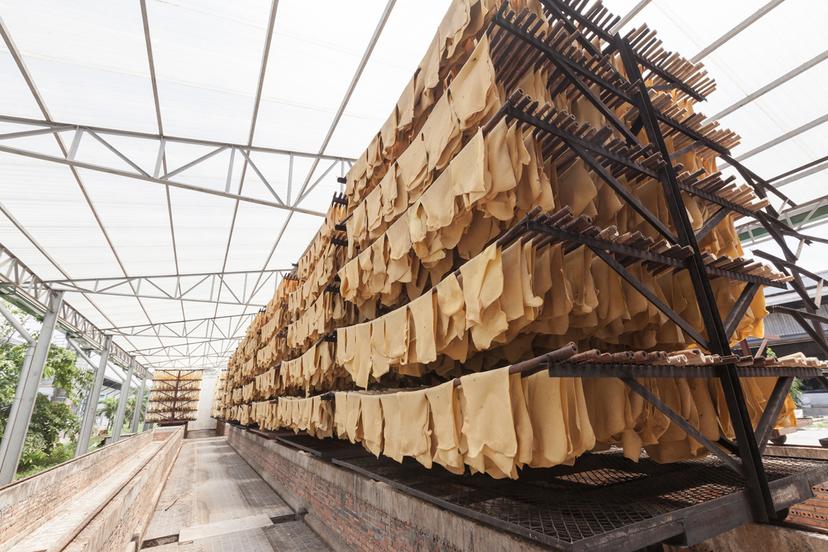Rubber

Industry Outlook
The coronavirus pandemic, which started in Wuhan, China, in late 2019, has impacted the U.S. rubber product manufacturing industry. Business lockdowns, transportation and travel restrictions, and social distancing requirements contributed to an economic slowdown. The research group IBISWorld reported that revenue in the U.S. rubber product manufacturing industry had plummeted in 2020 due to disruptions in supply chains. The U.S. tire manufacturing industry reported declining demand from downstream markets in 2020 due to the pandemic. Appreciation of the U.S. dollar from 2015 through 2020 caused further decline in revenue in this sector. Moving forward, however, the rubber industry overall was projected to "bounce back modestly due to pent-up demand and the recovery of downstream markets." The accelerated distribution of the COVID-19 vaccine in 2021 will lead to economic recovery, and with that growth in the rubber product manufacturing industry. Industry revenue growth will be due to increased demand for rubber goods from consumers and key markets. GlobeNewswire predicts a compound annual growth rate of 5 percent for the global rubber market from 2019 through 2026, estimating it will reach $45 billion in that time frame.
There were a total of 136,400 people employed in the U.S. rubber product manufacturing industry in 2019, according to the Bureau of Labor Statistics. The BLS projects that overall employment in manufacturing will decline by about .5 percent and the goods-producing industry (excluding agriculture) will decline by .1 percent through 2028. One factor limiting career growth in the rubber industry is increased automation in rubber manufacturing facilities. In addition, technological advances are making rubber goods more durable and longer lasting, which may contribute to slowed production. The U.S. Tire Manufacturers Association (USTMA) reported that tire shipments were stable in 2019, with a total of 332.7 million tires shipped and sold around the world. The USTMA projected a short-term decline for tire shipments in 2020 due to the pandemic. For the longer term, however, some growth is projected for overall shipments, and particularly good growth is forecast for the tire replacement sector.
Because an important part of the rubber industry is devoted to tires for vehicles, rubber goods production will always be related to the state of the automobile industry. The advent of the long-wearing radial tire, combined with the increasingly expensive capital expenditures needed to stay competitive, has caused some long-established tire and rubber companies to diversify into other areas, leaving the bulk of the U.S. and world tire market to the healthiest of the American companies and to foreign competitors. During the 1990s there were several mergers and cooperative arrangements among major rubber producers, and this type of activity is expected to continue. Experts predict that a major concern for the industry in coming years will be overcapacity as new plants open in Thailand, Indonesia, and South Korea.
By 2018, China had grown to the world's leading producer and consumer of synthetic rubber, followed by the United States; Japan, Korea, and Germany rounded out the top five consuming countries. The U.S. rubber industry is primarily concentrated in seven states: Texas, Louisiana, Ohio, Kentucky, New Jersey, Indiana, and Florida. Texas employs the largest number of workers in the synthetic rubber business. Larger companies in the rubber industry are multinational organizations that manufacture and sell their products around the world.
Although recycling is a small segment of the rubber industry, it employed more than 3,700 workers in 2019 and generated about $1 billion in revenue, according to the market research group Statista. The tire and rubber recycling industry has been growing steadily in recent years and is expected to continue growing through 2024. Growth is due to increased concerns about the environment and public health, which have created stricter regulations for waste tire and rubber disposal. In addition, there has been increased demand for industry products from manufacturers, with higher demand beeing created by the construction and energy sectors. Nearly half of recycled rubber is used for fuel of various kinds, with the remainder designated for other applications, such as civil engineering projects and rubber-modified asphalt. A small percent is exported to other countries or is used in agriculture for mulch.
Future growth in the rubber recycling segment may be somewhat limited by a lack of materials, that is, not enough worn-out tires available to recycle. In addition to developing new markets for existing recycled rubber products, companies are searching for new products that can be made using recycled rubber. Among potential uses being considered are carpet backing, trash cans, and plant seedling containers. One promising trend for the future of the rubber industry is the potential use of soy products as an alternative to some petroleum-based elements of rubber production.
